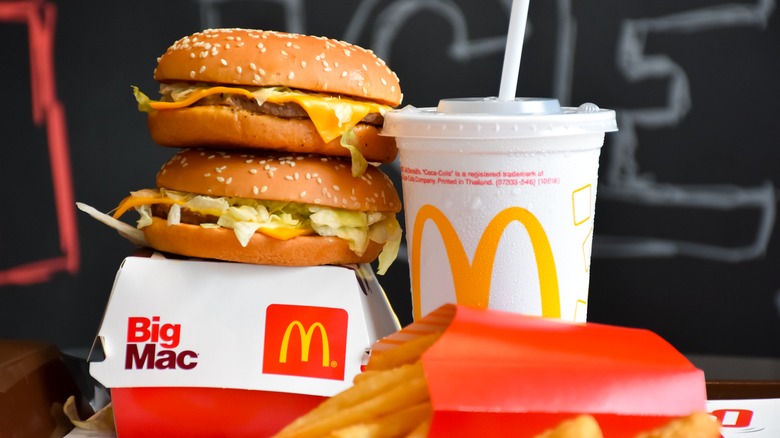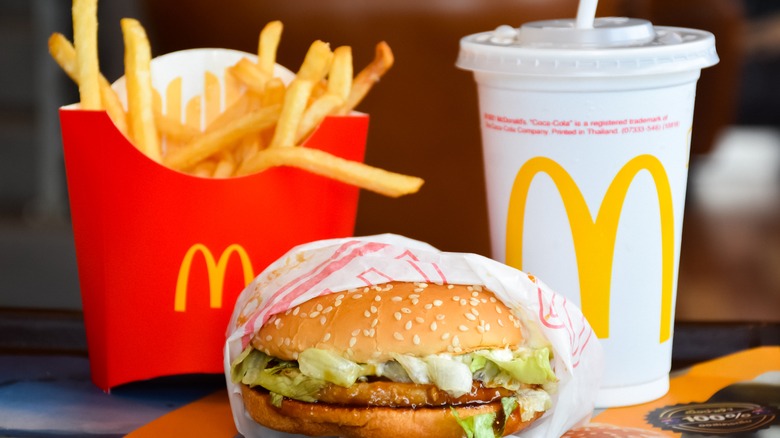Why McDonald's Ultimately Flopped In Bolivia
McDonald's may be the top dog in the United States for the casual dining experience, again ranking No. 1 in QSR's top fast-food chains in America in 2023. However, it isn't always the unstoppable juggernaut it appears to be. In particular, the fast-food operator hit several roadblocks when trying to expand to Bolivia in 1997. If you've recently visited the Tibet of the Americas, then you may have noticed there are no golden arches to be seen. That's because McDonald's pulled out of Bolivia in 2002, only a few years after it tried to launch in the country. McDonald's withdrawal from the region marked a rare failure for the company. So what happened?
While Bolivians do consume burgers, McDonald's arrival was hardly the slam dunk the chain envisioned for itself. Locals were going to the thousands of street vendors — largely made up of indigenous women – for their fix of burgers rather than the fast food chain. This led to poor year-on-year sales that caused the restaurant to shut its doors in the country.
Part of the blame can be placed on a move away from American influence in the early 2000s to focus on Bolivia's marginalized natives. Evo Morales, who had deep-rooted socialist policies, would eventually be elected president. Although he served after McDonald's Bolivian demise, he said in a 2013 speech to the UN, "The fast food of the West is doing a great deal of harm to humankind," as reported by CNBC.
Bolivia didn't have an appetite for McDonald's
Bolivia is just one country where you won't find a McDonald's, and that's unlikely to change anytime soon. There are around 120 countries worldwide that operate McDonald's restaurants. However, the chain is banned in at least nine countries. Although not officially banned in Bolivia, its failure to make a profit there became a learning opportunity for the company.
According to the McDonald's website, the chain often differentiates its menu to appeal to local tastes and customs. This is why its menu is often different from the United States. The company's statement reads, "We're keen to respect cultural differences, and so every country has its own policy of developing menu items." It's a practice that McDonald's deployed in Bolivia as well. For instance, McDonald's added a spicy sauce called llajua to its menu to appeal to locals' tastes. The chain also had plans to incorporate salteñas, an empanada popular with natives. However, McDonald's failed to take into account the country's demographic.
Pricing played a key role
The rising poverty line likely played a critical role in McDonald's demise in Bolivia. As reported by CNBC, when the chain first entered the country in 1997, around 63% of the population lived in poverty, and 38% lived in extreme poverty. Those statistics would rise by two percent when McDonald's left Bolivia in 2002. While the chain tries to cater to consumers with its value menu, it failed to compete with local prices.
Locals could get the food they craved cheaper than McDonald's offered. Tanya Kerssen, a research coordinator for the Food First Network, said, "People line up eating hamburgers on the street. It's sort of like a massive, decentralized McDonald's, controlled by all these indigenous women, mostly." A McDonald's combo in Bolivia cost around $4 to $5 at the time. However, locals could get a complete meal with more food for roughly $2 to $3 elsewhere. To put this into perspective, the average Bolivian monthly salary at the time was the equivalent of $83, according to CNBC. It was difficult for locals to justify spending a large percentage of their food budget on one meal. As a result, local street vendors boxed McDonald's out of the country.


